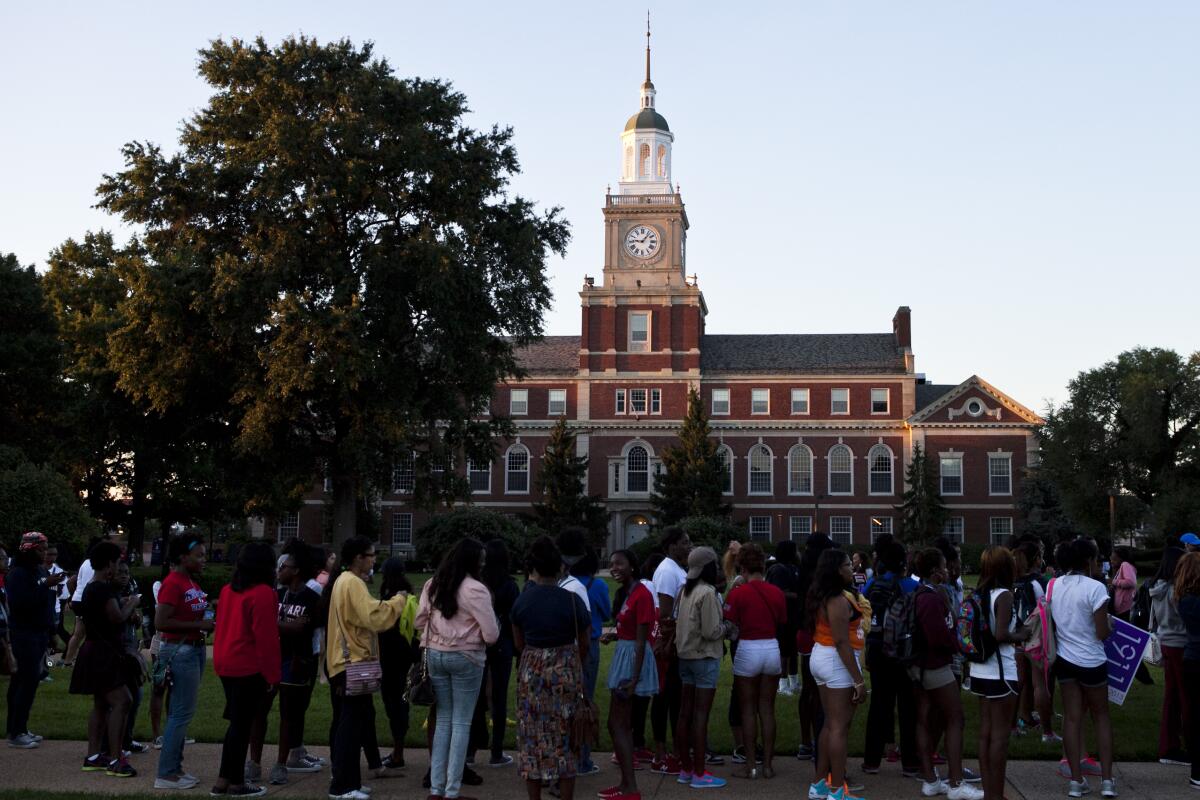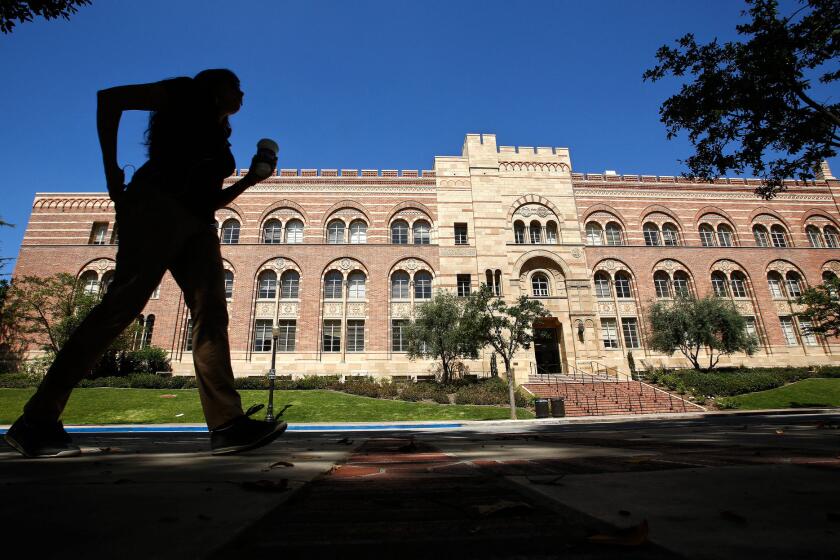Here’s why Black Californians should consider attending an HBCU

- Share via
Choosing a college is a huge decision, and each spring thousands of seniors across California commit the next four to six years of their life to a new school. I hope many of them, especially Black students, will not make the same mistake I did by ruling out all historically Black colleges and universities.
While the Golden State boasts wealth and jobs, educational and economic opportunities are far out of reach for many of the state’s Black residents. When Black Californians do enter into college, even at racially diverse institutions within the state, they are more likely to report having experienced blatant racism, racial microaggressions, feelings of isolation and general impressions that their institutions aren’t interested in their well-being or flourishing.
HBCUs provide an alternative to that. Black Californians in particular might benefit greatly from an educational environment that works to ensure Black student success and belonging, because they are a small minority in their home state. Overall, Black people in California make up only 5% of the state’s total population, compared with 13.4% nationally. And Black student enrollment at California state universities continues to decline.
There are more than 100 designated historically Black colleges and universities (HBCUs) in the United States. Most are in southern states. California has only one, and it’s in Los Angeles: Charles R. Drew University of Medicine and Science. It’s exclusively focused on health and science, which might mean many high school seniors won’t ever consider Charles R. Drew University.
They didn’t cause the crisis, but they’re going to pay the price as they close one by one. Unless lawmakers and donors do the right thing.
As a Black former college student from Washington, D.C., who attended predominantly white institutions, I wish I had attended an HBCU. But I bought into the narrative of “white colleges have more resources” and “white colleges prepare you for the real world.” And so, I exclusively applied to predominantly white universities. I never thought twice about how I would fare being “the only one” in 300-person almost all-white classes. I never fully fit in no matter how hard I tried to dress, style my hair, act and talk differently.
Had I attended an HBCU, I would’ve been embedded within a diverse community that could also relate to my experiences. I would’ve been taught by professors who looked like me. This would have made my academic experiences feel less like I was driving while blindfolded.
Now I am an assistant professor of sociology at San Jose State University, and the demographics of my students look completely different from those of the undergraduate classrooms I’d grown accustomed to in the past. Over three-quarters of my students are of color — which is far higher than for most public universities in California. I feel I’m finally giving back to a community of students who are more representative of the entire country. I also feel valued in a way that I did not as an undergraduate and graduate student in mostly white spaces.
Standardized testing should have no role in admissions or scholarships in California’s university system, and that’s just a start.
HBCUs serve as hubs for social activism and efforts toward advancing racial educational equity for students of all backgrounds. In fact, recent data show that historically Black institutions are attracting a significant percentage of non-Black students, including more Asian, Latinx and international students across racial groups than ever before. Many of these students say that they chose to enroll at HBCUs because of their campus climates, accessibility and competitive STEM programs.
Still, HBCUs are largely left out of conversations in terms of being rated as top college destinations. In recent years, notable barrier-breaking HBCU alums like Stacy Abrams, the voting rights activist (graduate of Spelman College), and Vice President Kamala Harris (Howard University graduate) have put some of these institutions on the map for more people.
In 2020, we began to see HBCUs receiving increased and much-deserved financial support. Policymakers paid more attention to these institutions as social issues such as the murder of George Floyd and the Black Lives Matter movement raised awareness about their missions and importance.
HBCUs should continue to be recognized for what they do for students and the lasting effects they have. They provide students something they can’t get anywhere else — an inclusive community of scholarship that celebrates the richness of the entire American experience. They have paved a broad avenue of access to postsecondary education for Black students and other students of color, first-generation students and those from low-income families.
So, while the debate about college value rages on during this admissions cycle, I hope prospective students and their families will consider touring HBCUs on their college road trips. These institutions have proven success in ensuring student achievement, retention and college completion.
Yolanda Wiggins is an assistant professor in the department of sociology and interdisciplinary social sciences at San José State University and a Public Voices Fellow with the Op-Ed Project.
A cure for the common opinion
Get thought-provoking perspectives with our weekly newsletter.
You may occasionally receive promotional content from the Los Angeles Times.








